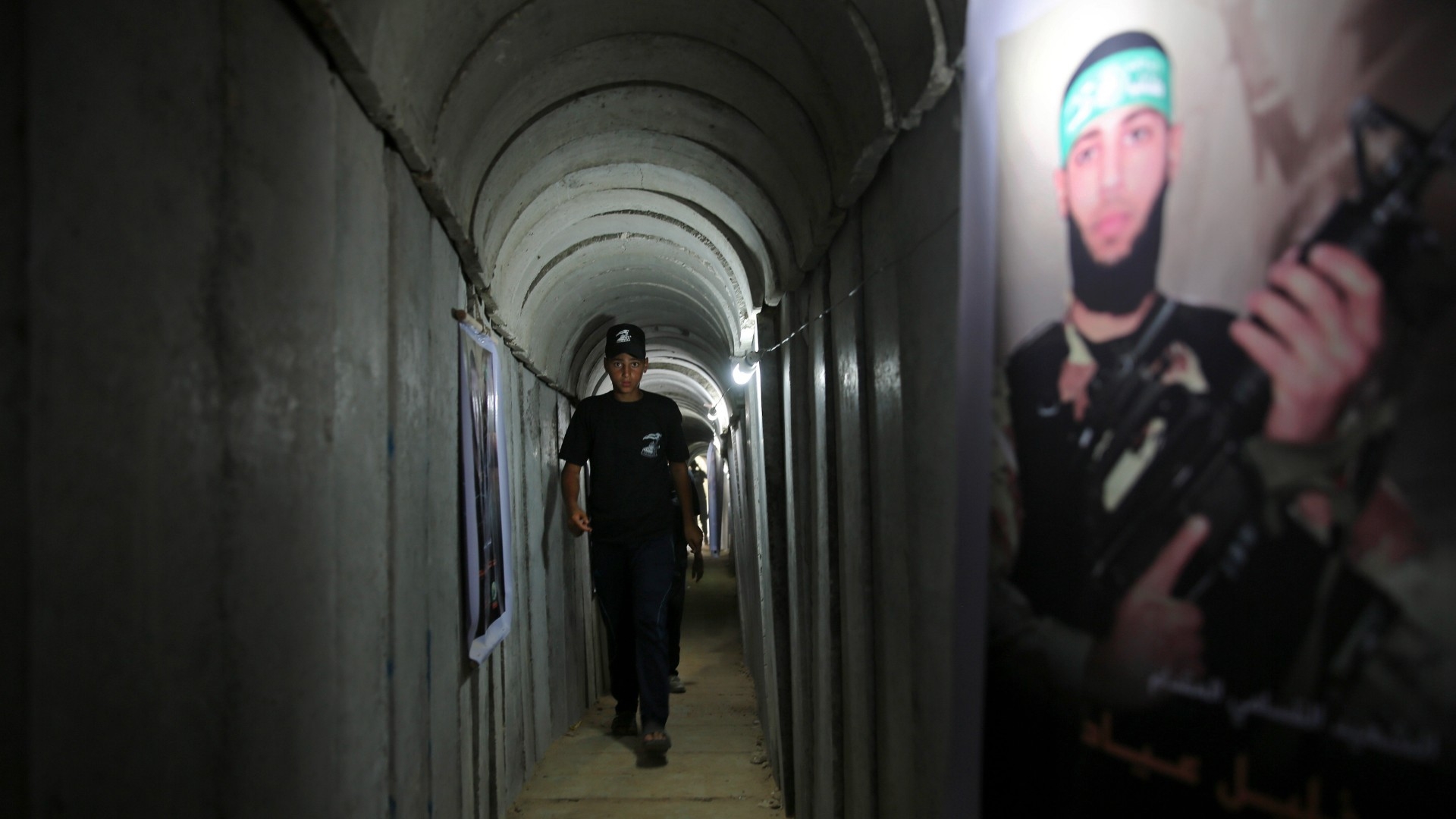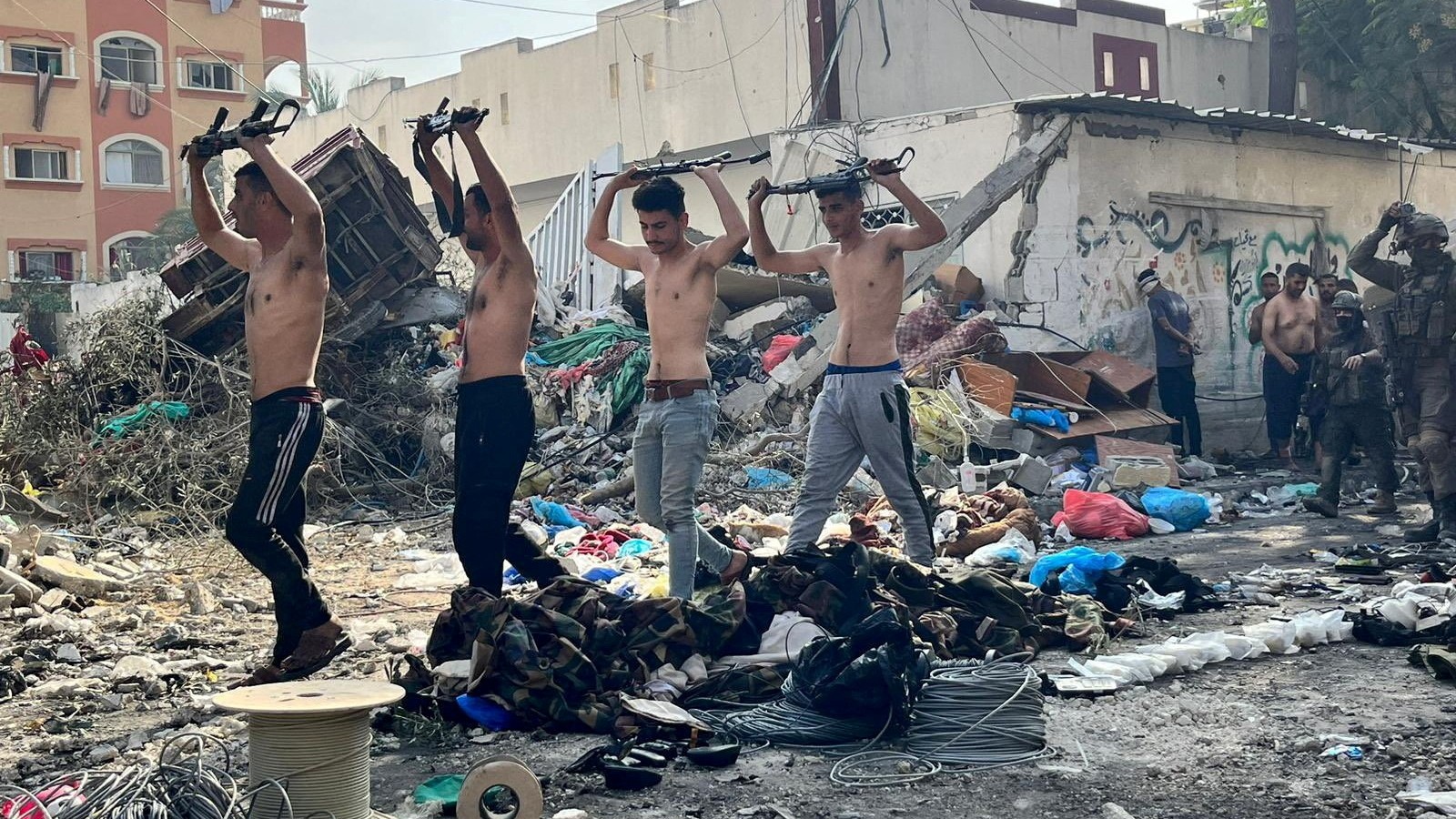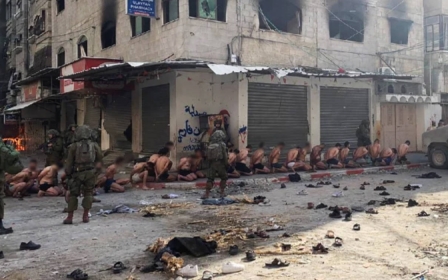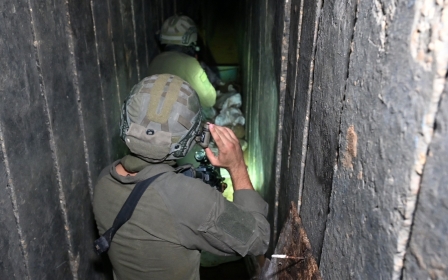Israel-Palestine war: Palestinian says soldiers sent him into Hamas tunnel strapped with bombs

A Palestinian civilian detained by Israeli forces in the Gaza Strip has described being bound and strapped with explosives before being forced into a tunnel suspected to be used by Hamas.
Hakim, 30, told Middle East Eye that the Israeli soldiers were using him as a human shield as they sought Hamas fighters underground.
The Palestinian, who wished to be identified only by his first name and was released two days ago, said he was one of the dozens of men seen in photographs and video bound and stripped to their underwear by Israeli troops.
One soldier, he recalled, told him he wanted to send him to his God, before taking him to a Hamas tunnel.
“He made me wear a belt filled with explosives, and placed a GoPro camera on my head along with a rope around my waist,” Hakim told MEE.
According to the Palestinian, he was then pushed into the tunnel and ordered to explore it to see if there were any fighters inside.
“They were prepared to explode the tunnel using my body if the camera on my head showed any fighters inside,” he said.
“I was 100 percent sure I was going to be killed at that moment, but then they pulled me out of the tunnel when they found nothing inside.”
According to Hakim, a 15-year-old boy was subjected to the same treatment. The boy, who had been detained with Hakim, survived and was released three days later, he said.
Middle East Eye has asked the Israeli military for comment.
Hamas is believed to have a vast network of tunnels across the Gaza Strip, where Israel believes thousands of fighters are hiding and operating out of.
Follow Middle East Eye's live coverage for the latest on the Israel-Palestine war
Since a 7 October Hamas-led attack on Israeli communities near Gaza which killed around 1,200 people, Israel’s military has waged a massive air and ground campaign on the coastal enclave. At least 18,700 Palestinians have been killed so far.
Israel says it will not end the war until Hamas has been eradicated. The Israeli military reportedly believes it has killed between 2,000-6,000 of the estimated 30,000 Hamas fighters in Gaza.
In recent days, Israel has begun flooding Hamas tunnels with seawater, despite the possible presence of around 130 Israeli captives.
Enforced disappearance
Though Hakim was freed, his brother and other relatives remain in Israeli captivity.
“We were left without food for days. We were given water to drink sometimes and we were insulted by the worst words one can think of,” Hakim said.
Israel published the footage of dozens of half-naked Palestinian captives held in the dirt a week ago, claiming they were Hamas fighters surrendering.
Yet eyewitnesses, released Palestinians and relatives of the detained have told Middle East Eye the men were civilians.
US State Department spokesperson Matthew Miller said on Monday that his administration found the pictures “deeply disturbing”.
“We are seeking more information both about the nature of the images and of course why they’re public in the first place,” he added.
On Tuesday, Hamas denied they were images of captured members of its military wing, the al-Qassam Brigades.
Hakim said neither he nor any of his relatives who were seized have anything to do with any of the armed groups in Gaza.
He said they were kept in a schoolyard in the cold.
“We were interrogated about Hamas and the Palestinian resistance. They released women and children and kept the men,” he said.
The Palestinian Centre for Human Rights, Al Mezan, and Al-Haq, all prominent Palestinian human rights groups, demanded on Tuesday an end to the enforced disappearance of hundreds of Palestinians in Gaza, including dozens of women and girls.
“Based on the information and testimonies obtained by our teams, Israeli authorities have been conducting mass arrest operations for several days, particularly in northern Gaza, arresting Palestinians from their homes or Unrwa schools,” the statement read, using an acronym for the UN’s agency for Palestinian refugees.
Muhammad Lubbad, a Palestinian living abroad, told MEE he could identify his relatives in the photos of the detainees.
“They are lying. None of my relatives shown in the pictures have ever engaged in any military activity,” he said.
This article is available in French on Middle East Eye French edition.
Middle East Eye propose une couverture et une analyse indépendantes et incomparables du Moyen-Orient, de l’Afrique du Nord et d’autres régions du monde. Pour en savoir plus sur la reprise de ce contenu et les frais qui s’appliquent, veuillez remplir ce formulaire [en anglais]. Pour en savoir plus sur MEE, cliquez ici [en anglais].






